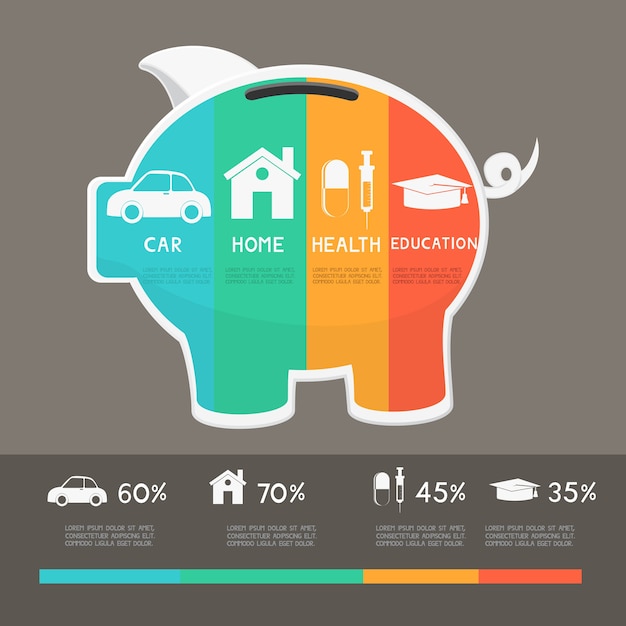Understanding Health Insurance Options: PPO vs HMO Plans in 2025

Understanding your health insurance options in 2025 is crucial, with PPO and HMO plans offering distinct approaches to healthcare access, costs, and flexibility.
Navigating the world of health insurance can feel overwhelming. Understanding Your Health Insurance Options: A Comparison of PPOs and HMOs in 2025 is essential for making informed decisions about your healthcare coverage and financial well-being.
Understanding Health Insurance Basics
Before diving into the specifics of PPOs and HMOs, grasping the fundamental concepts of health insurance is vital. This includes understanding terms like premiums, deductibles, copayments, and coinsurance.
Let’s break down these key elements:
Premiums
This is the monthly payment you make to maintain your health insurance coverage, regardless of whether you use healthcare services.
Deductibles
The amount you pay out-of-pocket for covered healthcare services before your insurance plan starts to pay.
Copayments and Coinsurance
A copayment is a fixed amount you pay for a covered healthcare service, while coinsurance is a percentage of the cost you pay after meeting your deductible.
These different elements work together to determine the overall cost of your healthcare. Understanding how they interact is crucial for choosing the right plan for your needs and budget.

Choosing the right health insurance involves weighing these costs against the potential benefits. For example, a plan with a higher premium may have a lower deductible, which could save you money in the long run if you anticipate needing frequent medical care.
Key takeaway: understanding the core components of health insurance is the first step towards making an informed decision and securing the right coverage for your needs.
What is a PPO (Preferred Provider Organization)?
A PPO plan offers a network of preferred healthcare providers. You typically have the flexibility to see doctors and specialists without a referral from a primary care physician (PCP).
PPOs provide greater flexibility and choice but usually come with higher premiums compared to HMOs.
Key Features of PPOs
- Flexibility: Ability to see specialists without a referral.
- Network: Access to a network of preferred providers.
- Out-of-network Coverage: Coverage for out-of-network services, but at a higher cost.
PPOs are suitable for individuals who value choice and flexibility in their healthcare, are willing to pay higher premiums, and want the option to seek care from providers outside the network.
What is an HMO (Health Maintenance Organization)?
An HMO plan typically requires you to choose a primary care physician (PCP) who manages your healthcare and provides referrals to specialists. HMOs often have lower premiums compared to PPOs.
HMOs emphasize coordinated care within a network but offer less flexibility in choosing providers.
Key Features of HMOs
- Primary Care Physician (PCP): Requirement to select a PCP for referrals.
- Network: Coverage limited to in-network providers.
- Lower Premiums: Generally lower monthly premiums compared to PPOs.
HMOs are a good option for individuals who prioritize lower costs, value coordinated care, and are comfortable working within a defined network of providers.
PPO vs. HMO: A Detailed Comparison of Plans in 2025
Understanding the differences between PPO and HMO plans is essential for making an informed decision. This section will delve deeper into various aspects of each plan, from cost and flexibility to network size and coverage.

Let’s compare PPOs and HMOs based on these key elements:
Cost
PPOs typically have higher premiums than HMOs but may have lower out-of-pocket costs if you need frequent specialist care. HMOs tend to have lower premiums but may have higher out-of-pocket costs if you go out of network or need specialist care without a referral.
Flexibility
PPOs offer more flexibility, allowing you to see specialists without referrals and seek care out of network (though at a higher cost). HMOs require referrals for specialist visits and generally don’t cover out-of-network care, except in emergencies.
Network Size
PPOs tend to have larger networks than HMOs, giving you more choices among doctors and hospitals. HMOs typically have smaller, more tightly managed networks, which can sometimes limit your options.
Choosing between a PPO and an HMO depends on your individual needs and preferences. If you value choice and flexibility, a PPO may be a better fit. If you prioritize lower costs and coordinated care, an HMO may be more appealing.
Factors to Consider for 2025 Health Insurance
As healthcare evolves, consider factors specific to 2025 when choosing your insurance plan. Telehealth options, preventative care benefits, and mental health coverage are all important aspects.
The healthcare landscape is constantly changing, so it’s crucial to stay informed and adapt your insurance choices accordingly.
Telehealth
Telehealth has become increasingly popular. Check if the plan offers virtual consultations and how these services are covered.
Preventive Care
Prioritize plans that offer comprehensive preventative care benefits, such as annual check-ups, vaccinations, and screenings.
Mental Health Coverage
Mental health is increasingly recognized as essential. Evaluate the plan’s coverage for therapy, counseling, and other mental health services.
Thinking about these emerging trends can help you select a health insurance plan that not only meets your current needs but also supports your long-term health and well-being.
Making the Right Choice for Employee Benefits
When selecting health insurance as part of employee benefits, consider your personal health needs, budget, and preferences. Evaluate the trade-offs between cost, flexibility, and coverage to make an informed decision.
Choosing the right health insurance is a personal decision that requires careful consideration of various factors.
- Assess Your Needs: Consider your health history, family medical needs, and expected healthcare utilization.
- Review the Benefits: Carefully examine the details of each plan, including premiums, deductibles, copayments, and coverage specifics.
- Seek Expert Advice: Consult with a benefits specialist or insurance advisor to get personalized guidance.
By taking a proactive approach and seeking expert advice, you can confidently choose a health insurance plan that provides the coverage and peace of mind you deserve.
| Key Point | Brief Description |
|---|---|
| 💰 Premiums | Monthly payment for health insurance coverage. |
| 👨⚕️ Referrals | Required by HMOs to see specialists, not by PPOs. |
| 🛠️ Flexibility | PPOs offer more flexibility in choosing providers. |
| 🌐 Network | PPOs have larger networks compared to HMOs. |
Frequently Asked Questions (FAQ)
▼
The key difference lies in flexibility and network. PPOs offer more flexibility to see specialists without referrals and have larger networks, while HMOs require referrals and have smaller networks.
▼
Generally, PPO plans have higher monthly premiums compared to HMO plans. However, HMOs may have higher out-of-pocket costs for out-of-network care or specialist visits without referrals.
▼
No, with a PPO plan, you typically do not need a referral from a primary care physician to see a specialist. This allows for greater flexibility in accessing specialized care.
▼
Many PPO and HMO plans now cover telehealth services, but the extent of coverage can vary. Check your plan’s specific details to understand how telehealth is covered.
▼
Consider your health needs, budget, and preferences. Evaluate the trade-offs between cost, flexibility, and coverage, and seek expert advice from a benefits specialist or insurance advisor.
Conclusion
Ultimately, **understanding your health insurance options: A comparison of PPOs and HMOs in 2025** boils down to aligning your healthcare needs with the right plan features. Consider your budget, desired flexibility, and anticipated medical needs to make an informed decision that best suits your individual circumstances.





